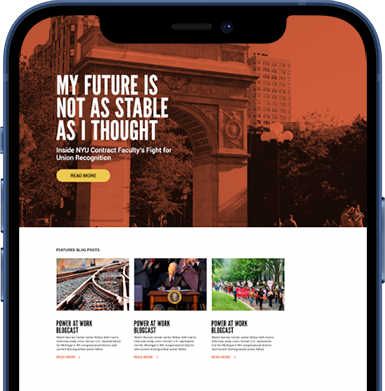Graduate students have been integral to the development of the academic environment, serving as pillars of intellectual rigor and research inside institutions. However, despite significant contributions, they often encounter obstacles such as inadequate compensation, limited benefits, and a lack of representation in university decision-making processes. These displays of employer power drove the movement by graduate students to organize. Motivated by a shared resolve to improve their working lives, graduate students chose to fight for fair working conditions and a more inclusive scholarly milieu. This article delves into the tumultuous history of these unions, and highlights how graduate student workers have overcome obstacles to pave the way for meaningful change in academia.
In the 1960s and 1970s, University of Wisconsin-Madison activists negotiated the first agreements between university administrators and student employees. This marked the beginning of graduate student unionization. For the rest of the 20th century, graduate student unions became common at many public institutions.
Graduate students at private universities encountered unique challenges in unionization due to their exclusion from the protections of the National Labor Relations Act (NLRA). During the 1970s, the National Labor Relations Board (NLRB) held that graduate students at private universities who were predominantly engaged in educational activities did not qualify as “employees” and, therefore, were not covered by the NLRA. While unions established themselves at most public institutions under state collective bargaining laws, graduate student workers in the private sector continued to lack collective power because of a narrow interpretation of the federal private-sector labor law.
Columbia graduate student workers picketing during a strike, Photo from GWC-UAW Local 2110
A notable shift occurred in 2000 when the NLRB bestowed collective bargaining rights on New York University (NYU) graduate students, acknowledging them as “employees” protected by federal law. This decision was a milestone for private universities, but it remained an isolated case with no other private-school students following the lead of NYU’s graduate students. The NLRB’s members are selected by the President of the United States, so changes in administrations have often led to inconsistent rulings by the NLRB over the past four decades. Consequently, four years after the NYU decision, under the Bush Administration, the NLRB reversed its earlier decision and held that graduate students are not employees and, therefore, not protected by federal law. This change occurred in a dispute involving Brown University and its graduate student workers, leading to the denial of the right to unionize for all graduate students.
The Brown case halted numerous student unionization efforts until 2010 when NYU organizers once again took a leap of faith and filed a petition for a union representation election with the NLRB. They hoped that Obama appointees to the NLRB would give them another chance. However, instead of letting the legal process unfold, NYU voluntarily recognized the union. This action energized unionization efforts on other campuses while avoiding a precedent-setting ruling by the NLRB.
Six years later, following a strike organized by Columbia University's graduate student workers due to growing dissatisfaction over inadequate resources and working conditions, graduate student representatives submitted a petition to the NLRB. In response, the NLRB reversed its Brown decision and held, again, that graduate student workers are employees entitled to the same labor law protections as other employees. The Columbia strike and the associated NLRB decision had wide-ranging effects encouraging other graduate student organizers struggling to gain official recognition and successful contracts. Quickly, students from Harvard, Georgetown and Vanderbilt started organizing.
This video captures a Democracy Now story about the pivotal strike at Columbia University from 2016 that sparked the modern graduate student worker organizing wave.
Columbia grad student workers strike for a fair contract.
More and more graduate student worker unions have organized on campuses. This includes the graduate student workers here at Northeastern, who recently unionized with GENU-UAW after eight years of organizing. In December 2019, the Harvard Graduate Student Union-United Automobile Workers held a strike while negotiating for their second contract. Georgetown students received raises and better health care in their first contract. Vanderbilt students showed their collective strength by striking in 2021 and winning approximately 30% raises and additional health insurance funding for student workers. Furthermore, the agreement included vacation pay and authorizations for childcare absences.
The following video, produced by the Harvard Crimson, introduces the 2019 Harvard graduate student strike with descriptions of the students' demands for fair pay, enhanced healthcare, and more effective harassment and discrimination protections.
Week 1 of Harvard's Grad Student Strike
Looking back at the history and efforts of graduate student worker unions shows us their significant impact. These groups have fought hard for better pay and university working conditions, inspiring others to also stand up for their rights. Despite many challenges, they have persevered and shown the power of working together for change. The story of these unions reminds us that when workers join forces, including student workers, they can really make a difference.
To learn more about union organizing on college and university campuses, watch or listen to Power At Work Blogcast #2: HIgher Education Organizing.
Watch: https://poweratwork.us/higher-education-organizing-blogcast
Listen: https://poweratwork.us/higher-education-organizing-podcast or go to Spotify, Apple Music, or Google Podcasts to listen or download this episode or all the Power At Work blogcasts episodes.

